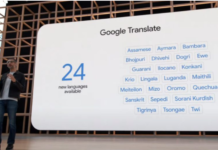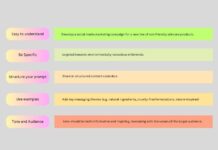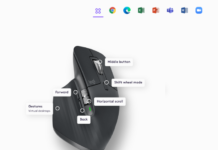Here is Facebook’s all new tool to fight fake news
Facebook started the war against the fake news, rumors, and hoaxes which appear in the news feed on Facebook. Because of these rumors and fake news Facebook received heated criticism for its role in spreading a deluge of political misinformation during the US presidential election, with accusations that it may have influenced the behavior of voters.
Facebook CEO Mark Zuckerberg dismissed concerns about fake news, arguing that it was a “pretty crazy idea” to blame Facebook for Donald Trump’s upset win.
Facebook has finally laid out how it plans to crack down on fake news. The social network’s corrective updates are starting to roll out right now, and while they won’t solve the problem overnight, they’re an important first step.
Now, it seems, Facebook is taking it seriously. The company announced on Thursday several new features designed to identify, flag, and slow the spread of false news stories on its platform, including a partnership with third-party fact-checkers such as Snopes, PolitiFact and ABC News, that are part of an international fact-checking network led by Poynter, a non-profit school for journalism in St. Petersburg, Florida. It is also taking steps to prevent spammers and publishers from profiting from fake news.
Facebook News Feed chief Adam Mosseri said in a company blog post on Thursdays, “We’ve focused our efforts on the worst of the worst, on the clear hoaxes spread by spammers for their own gain, and on engaging both our community and third-party organizations,”
The work falls into the following four areas. These are just some of the first steps we’re taking to improve the experience for people on Facebook. We’ll learn from these tests, and iterate and extend them over time.
Easier Reporting
We’re testing several ways to make it easier to report a hoax if you see one on Facebook, which you can do by clicking the upper right-hand corner of a post. We’ve relied heavily on our community for help on this issue, and this can help us detect more fake news.
Flagging Stories as Disputed
We believe providing more context can help people decide for themselves what to trust and what to share. We’ve started a program to work with third-party fact-checking organizations that are signatories of Poynter’s International Fact Checking Code of Principles. We’ll use the reports from our community, along with other signals, to send stories to these organizations. If the fact checking organizations identify a story as fake, it will get flagged as disputed and there will be a link to the corresponding article explaining why. Stories that have been disputed may also appear lower in News Feed.
It will still be possible to share these stories, but you will see a warning that the story has been disputed as you share.
Once a story is flagged, it can’t be made into an ad and promoted, either.
Informed Sharing
We’re always looking to improve News Feed by listening to what the community is telling us. We’ve found that if reading an article makes people significantly less likely to share it, that may be a sign that a story has misled people in some way. We’re going to test incorporating this signal into ranking, specifically for articles that are outliers, where people who read the article are significantly less likely to share it.
Disrupting Financial Incentives for Spammers
We’ve found that a lot of fake news is financially motivated. Spammers make money by masquerading as well-known news organizations, and posting hoaxes that get people to visit their sites, which are often mostly ads. So we’re doing several things to reduce the financial incentives. On the buying side, we’ve eliminated the ability to spoof domains, which will reduce the prevalence of sites that pretend to be real publications. On the publisher side, we are analyzing publisher sites to detect where policy enforcement actions might be necessary.
It’s important to us that the stories you see on Facebook are authentic and meaningful. We’re excited about this progress, but we know there’s more to be done. We’re going to keep working on this problem for as long as it takes to get it right.
“But it’s a step in the right direction.”
The role of Facebook in encouraging and spreading misinformation during the US election, including completely fictional news stories created as a moneymaking scheme by teenagers in Macedonia and inaccurate propaganda, saw the company be accused of abdicating its responsibility and helping the election of Donald Trump. Many fake news stories appear in the “trending” feed on Facebook, encouraging them to be read and shared, despite their inaccuracies.
The rise of fake news across Facebook and other social media has quickly become a global problem, with tech companies, including Twitter, rolling out changes to attempt to thwart the trend.
Facebook will still take engagement into account, but now it will also take accuracy into account. Disputed stories can still be shared on the newsfeed, but they’ll tend to appear further down in the newsfeed than stories that have not been marked as inaccurate by fact-checkers.
And if users try to share a disputed story, Facebook will warn users that the story is disputed and ask if they really want to share it. That might help discourage users from unknowingly sharing bogus information.

















































